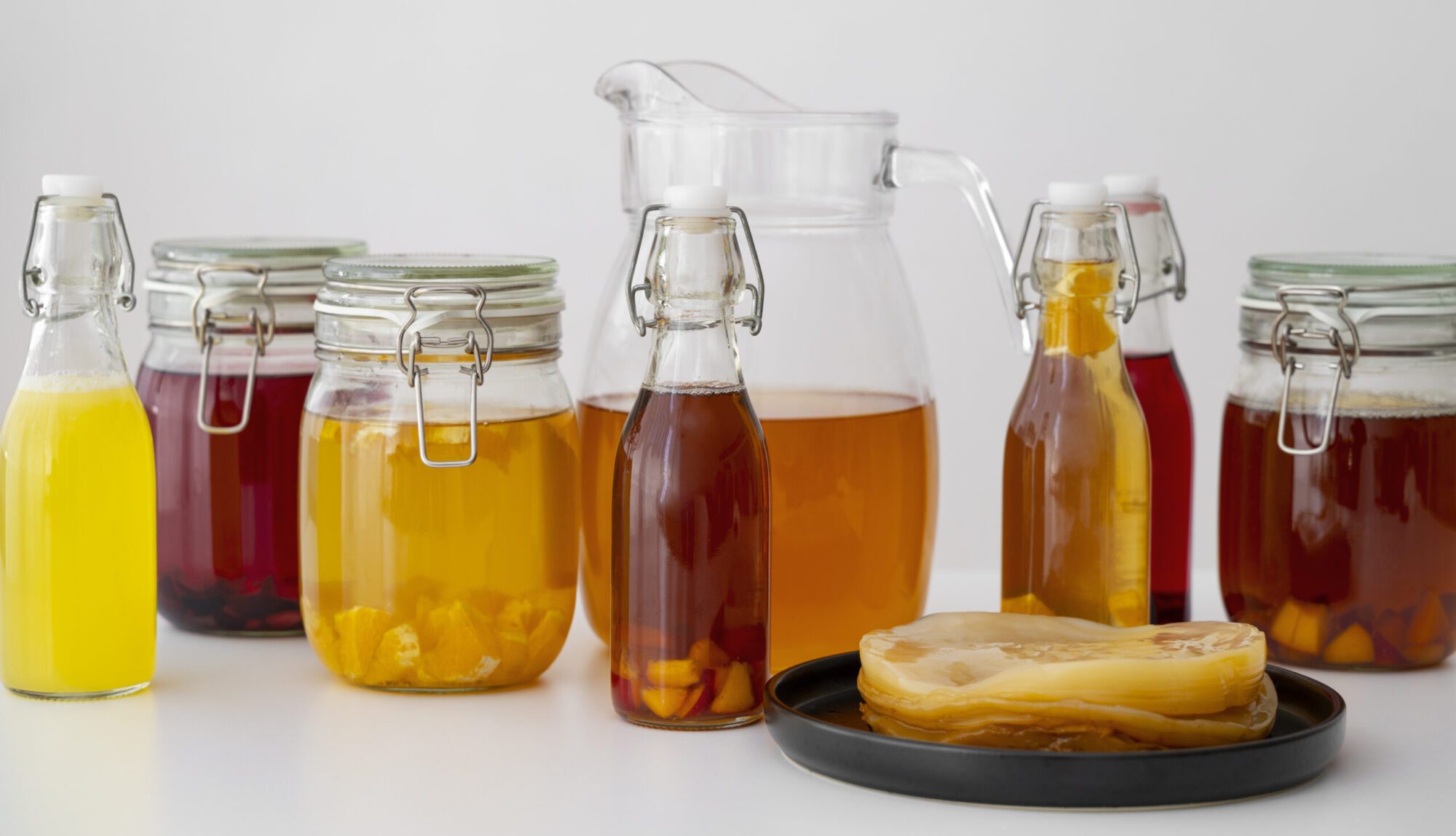Step by Step Guide to Brewing Kombucha Tea at Home

Step by Step Guide to Brewing Kombucha Tea at Home
Kombucha tea has been gaining popularity in recent years due to its potential health benefits and delicious taste. This fermented tea has been consumed for centuries in various cultures for its probiotic properties and is often touted as a natural remedy for a variety of ailments. While it’s readily available at health food stores and specialty markets, making your own kombucha tea at home can be a rewarding and cost-effective alternative. In this article, we’ll provide a comprehensive step-by-step guide to brewing kombucha tea at home.
What is Kombucha Tea?
Kombucha tea is a fermented beverage made from sweetened tea and a culture of bacteria and yeast known as a SCOBY (Symbiotic Culture Of Bacteria and Yeast). The fermentation process produces a slightly effervescent, tangy-flavored drink that is often enjoyed for its probiotic content and potential health benefits.
Kombucha tea has been associated with several health benefits, as it contains beneficial nutrients such as vitamins, enzymes, organic acids, and beneficial bacteria. Some potential health benefits of consuming kombucha tea include improved digestion, enhanced immune function, and increased energy levels.
Keep in mind that while many enthusiasts believe in the health benefits of kombucha tea, scientific evidence supporting these claims is still limited. Nonetheless, many people enjoy kombucha tea for its unique flavor and refreshing qualities.
Step-by-Step Guide to Brewing Kombucha Tea at Home
1. Gather the necessary equipment and ingredients
Before you start brewing kombucha tea at home, it’s essential to gather the necessary equipment and ingredients. Here’s what you’ll need:
– Large glass jar or container (1 gallon capacity)
– SCOBY (can be obtained from a friend or purchased online)
– 1 cup of starter tea (previously brewed kombucha tea or store-bought, unflavored kombucha)
– 1 cup of granulated sugar
– 8 bags of black or green tea
– Distilled water
– Cotton cloth or paper coffee filter
– Rubber band or string
– pH testing strips (optional)
– Flavoring ingredients (optional) such as fresh fruit, ginger, or herbs
2. Prepare the tea base
Start by boiling 4 cups of distilled water in a large pot. Once the water comes to a boil, remove it from the heat and add the 8 tea bags to the pot. Let the tea steep for about 10-15 minutes, then remove the tea bags and discard them. Stir in the granulated sugar until it dissolves, and then add 8 more cups of distilled water to cool down the tea base.
3. Add the SCOBY and starter tea
Once the tea base has cooled to room temperature, carefully pour it into the large glass jar or container. Add the SCOBY to the jar, along with 1 cup of starter tea. The starter tea is essential for acidifying the environment and providing the necessary resources for the SCOBY to begin fermenting the sweetened tea.
4. Cover the jar with a cloth or filter
Cover the jar with a breathable cloth or paper coffee filter and secure it with a rubber band or string. This helps protect the brewing kombucha tea from contaminants while allowing airflow for the fermentation process.
5. Ferment the kombucha tea
Place the jar in a warm, dark place (ideally between 75°F and 85°F) and allow the kombucha tea to ferment for 7-10 days. During this time, the SCOBY will metabolize the sugars in the tea and produce organic acids, enzymes, and probiotics, resulting in the transformation of the sweetened tea into kombucha.
It’s important to note that the fermentation time may vary depending on the ambient temperature and the strength of the SCOBY. You can taste the kombucha tea after a few days to gauge its flavor and acidity. The longer it ferments, the more acidic and less sweet it will become.
6. Test the kombucha tea’s pH (optional)
If you’re interested in monitoring the fermentation progress of your kombucha tea, you can use pH testing strips to measure the acidity levels. pH strips can be purchased at most homebrew supply stores or online. The optimal pH range for finished kombucha tea is typically between 2.5 and 3.5.
7. Bottle the kombucha tea
Once the kombucha tea has reached your desired level of tartness, it’s time to bottle it. Carefully remove the SCOBY from the jar and place it in a small container with a cup or two of the finished kombucha tea. This will help preserve the SCOBY for future batches.
Using a funnel, fill clean glass bottles with the finished kombucha tea, leaving some space at the top. If you’d like to flavor your kombucha tea, you can add fresh fruit, ginger, or herbs to the bottles at this stage. Tightly seal the bottles with caps or lids to contain the carbonation that will develop during secondary fermentation.
8. Secondary fermentation (optional)
If you prefer carbonated kombucha, you can allow the bottled tea to undergo a secondary fermentation at room temperature for 1-3 days. This additional time allows the yeast in the kombucha to consume the added sugars and produce carbon dioxide, resulting in a naturally effervescent beverage.
9. Refrigerate and enjoy
Once the secondary fermentation is complete, move the bottles of kombucha tea to the refrigerator to slow down the fermentation process and chill the tea. After a few hours of chilling, your homemade kombucha tea will be ready to enjoy!
10. Start a new batch
With your first batch of kombucha tea completed, you can use the saved SCOBY and starter tea to start a new batch. Simply follow the steps outlined above to continue brewing your own kombucha tea at home.
Final Thoughts
Brewing kombucha tea at home is a straightforward and rewarding process that allows you to create a delicious, probiotic-rich beverage at a fraction of the cost of store-bought versions. With the right equipment, ingredients, and a little patience, you can enjoy the health benefits and refreshing taste of homemade kombucha tea. Whether you’re a seasoned homebrewer or new to the world of fermented beverages, making your own kombucha tea can be a fun and creative endeavor. Cheers to your successful kombucha brewing endeavors!
[elementor-template id=”430″]
[elementor-template id=”433″]



0 Comments